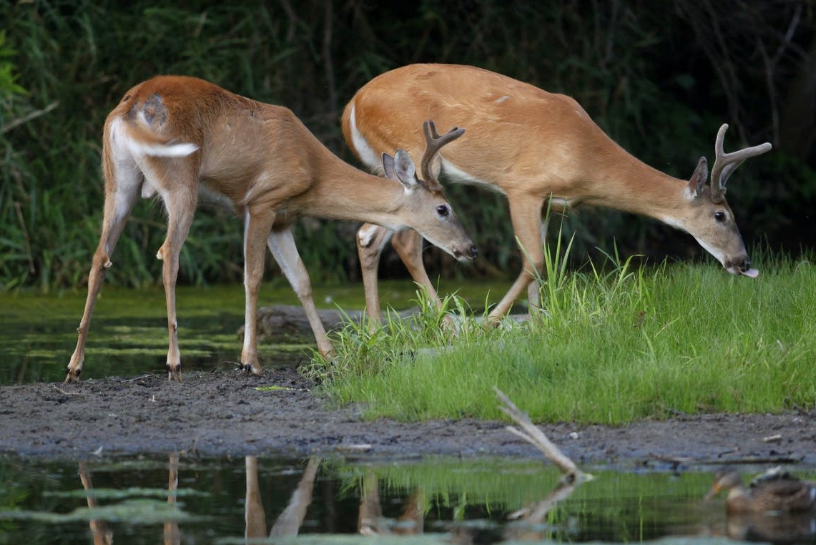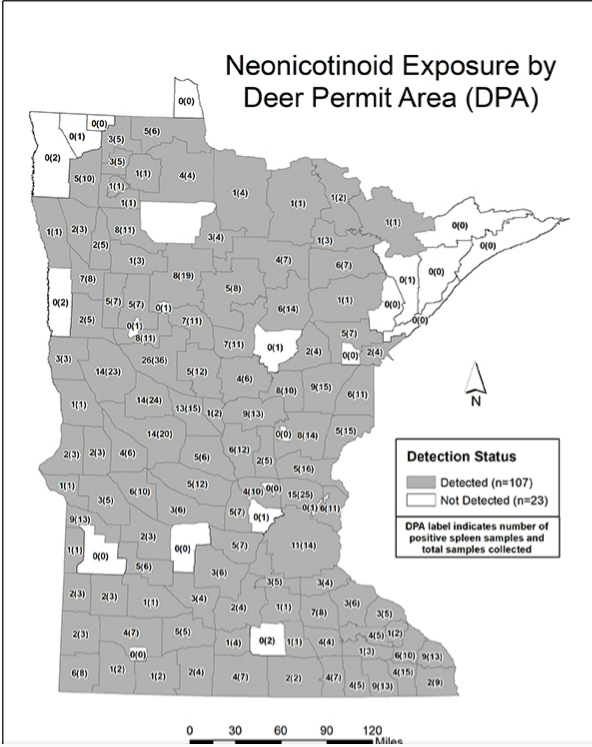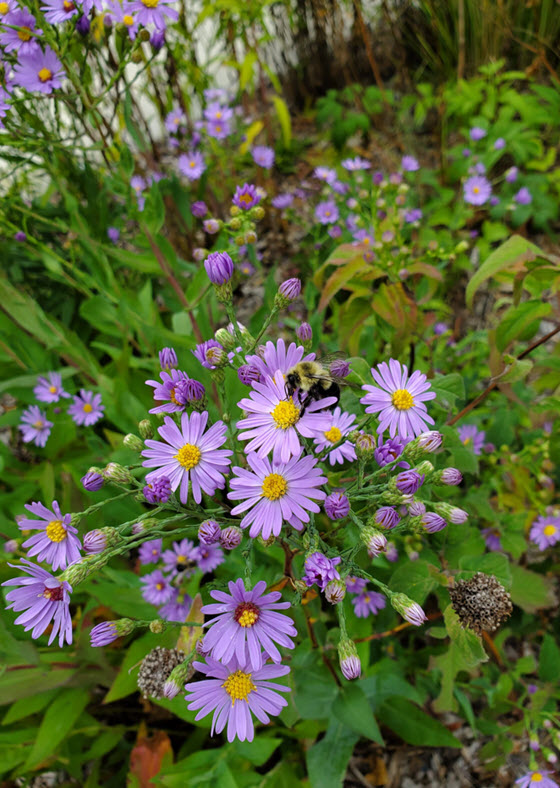Click below to listen to my 2 min. Garden Bite radio show/podcast: Neonics and deer
A couple of weeks ago an article in the Minneapolis Star Tribune newspaper caught my eye with the headline “Majority of deer exposed to toxin”. State biologists tested the spleens of road kill deer and those sent in by hunters. 94% had concentrations of neonicotinoids. More from MPRNews.org.

But it gets worse, nearly two-thirds of those deer had higher concentrations than a threshold found to potentially lower fawn survival and cause deformities.

Neonics started to dominate the pesticide scene in the early 2000’s after they appeared safer for humans and mammals than previous ones.
The chemicals are a synthetic form of nicotine and act as a neurotoxin to insects. After continued evidence of bee deaths by neonics, the European Union banned them.
America has not and they’re now used on 98% of corn, soybean, wheat and cotton growing on the continent, according to the Dept. of Natural Resources. Researchers were surprised that deer in the woods of Northern Minnesota were just as likely to have neonics in their system as those taken among the vast corn and soybean fields of southern Minnesota… and they don’t know why.
Outdoor News has also reported on the issue.

Is it water they drink? Seeds they eat? Clearly more research is necessary. How long do the chemicals stay in their system? How do the chemicals behave in the environment?
The article goes on to say that the deer population remains healthy as a whole but we don’t know what it all means. We do know that neonics have been shown to be detrimental to our pollinators, in particular, bumblebees.

